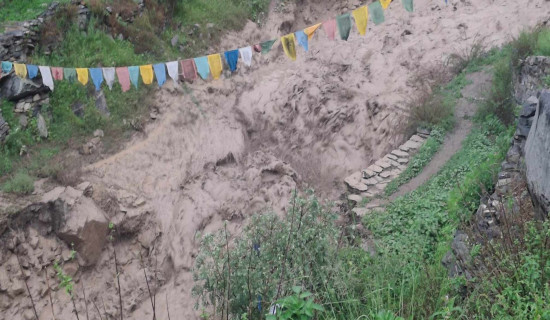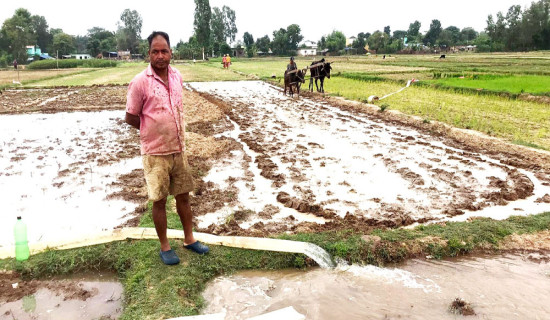- Thursday, 31 July 2025
Resources For Local Units
Parmeshwar Devkota
Mayor of Kathmandu Metropolitan City (KMC) Balendra Shah has risen to prominence after becoming an elected head of the capital city. He has carved an image of action-oriented leader among the people of all age groups. His sharp comments on the social media targeting different politicians have also put him in the spotlight. He has also been dragged into controversy over his various activities. A section of people think that Balen failed to prove his mettle as an effective manager when it comes to spending KMC's budget. He has been able to mobilise only a fraction of annual budget.
Now the locals are protesting his initiative to widen the pavements from Juddha Salik to Indra Chowk section of New Road. The federal government and KMC have quarreled over their jurisdiction on this issue. Though it is a small issue to be a national one, but it bears a fierce piece of tussle between the KMC and local people and business community. There are pros and cons of the KMC's bid. If the pavements of the New Road area are widened, then, thousands of pedestrians will take a sigh of relief and walk freely without jostling and elbowing each other.
The dispute between the KMC and federal government is likely to clear the confusion with regard to their authority. The new constitution has allotted separate powers and rights among the three tier of the government. The promulgation of the present constitution in 2015 was possible with the assertive attempts of political leaders and the Constituent Assembly. To implement the federal charter, the then government formed a Local Level Reconstruction Recommendation Commission (LLRC), headed by Blananda Poudyal. The LLRC recommended six metropolitan cities, 11 sub-metropolitan cities, 276 municipalities and 460 rural municipalities based on the minimum ceiling of population, geographical area, ethnic, lingual and cultural density, geographic accessibility, natural resources, institutional infrastructure and income and expenditure potentials of the area.
But, Balananda Commission did not pay much attention to the economic condition of all 753 local levels. Had the Balananda Commission taken all local levels as the cooperative units, the economic gap among local levels would have been minimum. It is because the local levels operate under the same constitutional provisions, laws and by-laws. The local levels should have been given equal economic resources. The budgets of metropolitan, sub-metropolitan cities, and even some municipalities run in billions of rupees. They cannot spend the budget in stipulated time period, resulting in their freeze.
In the next fiscal year, they collect same amount of money with which they can be self-reliant. On the other hand, majority of municipalities and rural municipalities are facing survival crisis. The municipalities in the hilly and mountain regions spread into hundreds of kilometres on uneven terrains. So, they are facing shortage of basic infrastructures such as bridges, access and health facilities. Therefore, it is imperative for the rich local levels to support the poor ones. To fill the financing gap among the local levels, there should be a legal provision to transfer idle money of rich local levels to the poor ones.

















